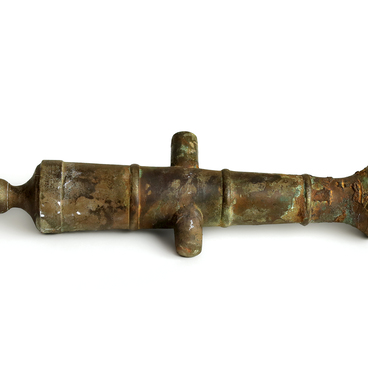The museum houses a portrait of Yemelyan Ivanovich Pugachev, a Don Cossack and the leader of the Peasants’ War of 1773–1775. The image was painted over another portrait by an unknown artist.
The displayed portrait is a copy created by Vladislav Mikhailovich Yeremyonko, an artist from Orenburg, in the second half of the 20th century.
The original painting can be found in the State Historical Museum of the Southern Urals. It was discovered in the museum repository in 1924. It originated from the private gallery of Nikolay Petrovich Yermolov, a collector and nephew of General Aleksey Petrovich Yermolov.
On the front of the painting, at the top, there is an inscription that reads, “September 1773”. On the back, the name of the person who commissioned the portrait is indicated, “Yemelyan Pugachev from the Cossack village, of our Orthodox faith. The image belongs to Ivan, son of Prokhor, of the same faith. It was painted on September 21, 1773.“
Based on the date, it is also possible to determine the location where the portrait was created — Iletsky Gorodok which Yemelyan Pugachev visited from September 20 to 22, 1773. He stayed in the house of one of his associates, the Cossack Ivan Alexandrovich Tvorogov. It was also there that local silversmiths made personalized engraved seals for Pugachev.
Some historians doubt that the date of the portrait’s creation is accurate. In the 20th century, it was suggested that the portrait of Pugachev was painted over that of Empress Catherine II. A study of the pigments used in both portraits revealed that the Empress’ portrait was created using the techniques of Russian and European painting which were applied in the 17th and 18th centuries. On an X-ray, the portrait of Pugachev turned out to be completely invisible.
After that, a thorough examination of the upper layer with Pugachev’s portrait began. It confirmed that the upper layer was painted using a completely different technique that appeared in the early 19th century. The dating of several pigments indicated that the painting was created no later than the middle of the second half of the 19th century, which corresponds to a time when interest in Yemelyan Pugachev and his life arose in Russian society.


